Let's start with the name. It includes "Google+", so it looks like a Google+ feature. The product actually borrows the name of Google+'s group video chat feature.
How can you use this product? There are 5 ways: inside Google+ (replaces the Google Chat box), inside Gmail (optionally replaces the Gmail Chat box), using a Chrome extension (has already replaced the Google Chat extension and it requires Google+), an Android app (gradually replacing the built-in Google Talk app) and an iOS app (entirely new, requires Google+).
As you can see, 3 of the 5 ways to use it require Google+. You can refuse to upgrade to Hangouts in Gmail, but the Gmail Chat feature will eventually be discontinued. Probably most Android users will upgrade from Google Talk to Google+ Hangouts. The only other Google Chat clients are the Google Talk app for Windows and the chat boxes from iGoogle and orkut.
Google+ Hangouts doesn't require Google+, but most Google+ Hangouts clients require Google+. Actually there are 2 features that are somehow tied to Google+: sharing photos (they're uploaded to Google+ photos) and group chat. Here's what happens when you try to use them in Gmail, without joining Google+:
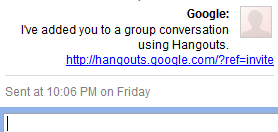
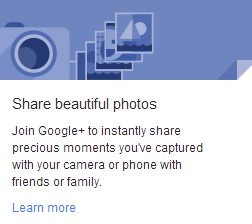
Google+ Hangouts has little in common with Google Chat/Talk, it's actually an upgraded Google+ Messenger. Hangouts focuses on conversations, not people, that's why you won't see a long list of buddies. Ideally, Hangouts lets you communicate with anyone you've added to a Google+ circle or anyone else, if you know his email address or phone number. When you open mobile clients for the first time, Google asks you to verify your phone number and that's optional.
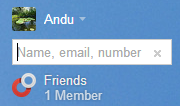
Many people complain that Hangouts doesn't show if someone is online. Google's new service does away with busy/away/invisible/offline and has a different way to show if some is "connected": a green bar under the photo if someone can reply immediately. It only shows up if someone actually uses the application.
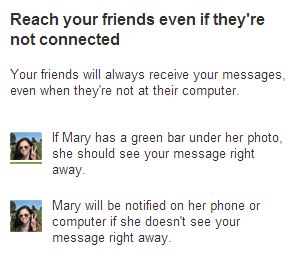
Hangout's tagline is "conversations come to life". Maybe because there are hundreds of emojis you can add to your messages, maybe because there's video chat, maybe because of the presence signals. "Hangouts inserts tiny little square avatars into the chat history, called 'watermarks.' These watermarks show when somebody else is typing, but they also indicate how far others have read in the conversation," reports The Verge.
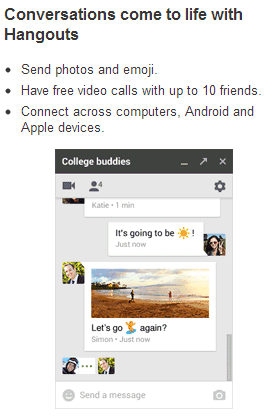
Google+ Hangouts lacks many features from Google Chat: voice chat, phone calls, sending SMS, formatting tricks. You can now use keyboard shortcuts, but only for the desktop clients. Hangouts has its own Easter Eggs and they're really funny. Unfortunately, Hangouts drops support for server-to-server XMPP, it can't interact with other XMPP apps/services. It still works with Gmail Chat and Google Talk, though.
So what's Google+ Hangouts, after all? "The single communication app that we want our users to rely on," says Nikhyl Singhal, from Google. "We don't see Hangouts as a messaging product, we see it as a communication product," says product manager Kate Cushing.
Hangouts lets you decide for each Google+ circle if you want to be added to a hangout by its members or if you want them to send a request. Notifications are supposed to be synchronized for all your devices, so you only see them once, but I got multiple notifications.
Google+ is about real-life sharing, so Hangouts is built on top of the original Hangouts and Messenger features. The initial name of Google+ Messenger was Huddle, which means "draw together for an informal, private conversation".
The Talk era was about openness, the Chat era was about ubiquity, the Hangouts era is about Google+, the new Google that's all about social and mobile. From OpenSocial to ClosedSocial, from OpenMessaging to ClosedMessaging, from idealism to realism.

No comments:
Post a Comment
Note: Only a member of this blog may post a comment.